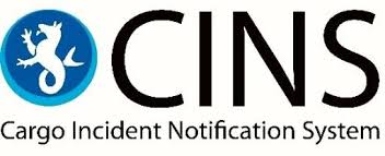 Earlier this year, the International Group and CINS, the Cargo Incident Notification System, jointly published guidelines for the carriage of seed cake in containers. An updated version has been released containing some minor changes to the text including an updated description and some clarification of details following queries received from container ship operators.
Earlier this year, the International Group and CINS, the Cargo Incident Notification System, jointly published guidelines for the carriage of seed cake in containers. An updated version has been released containing some minor changes to the text including an updated description and some clarification of details following queries received from container ship operators.
The carriage of these cargoes continues to cause confusion and the potential for mis-declaration remains high with the consequent risk of fire on board container ships. Seed cake is the term used for pulp, cake, pellets, expellers or other cargo where oil has been removed from oil-bearing seeds, cereals or commodities with similar properties, including all such types of seed meal. It is principally used as an ingredient in animal feeds.
It is produced by removing oils and fats from plant material, either by mechanically crushing the seeds (known as expelling) or extracting the oil by the use of a solvent. Neither method removes all of the oil and it is the reactivity of the residual oil which gives rise to the hazardous properties of seed cake. The method of oil removal and the percentage of oil and moisture remaining determine which UN Number it will fall under in the IMDG Code.
The guidelines provide advice about container selection, packing and stowage on board ship.
For seed cake carried in packaged form, the packaging of cargo within the container should be in accordance with the requirements of Chapter 4.1 of the IMDG Code.
It should be noted that there is some confusion between ‘bulk shipments’ and shipments that use ‘bulk containers’. In case of shipment of seed cake carried in bulk in closed bulk containers, the IMDG Code applies on the basis that such are packaged goods, BK2, under Chapter 4.3. The IMSBC Code is not applicable to such shipments.
Under Special Packing Provision PP20, any sift-proof, tear-proof receptacle may be used for seed cake UN 1386 and UN 2217. For seed cake UN 1386 or UN 2217 carried in bulk in closed bulk containers, the containers should be suitably lined to prevent spillage.
Packs of silica gel may be used to influence condensation within the container. It should be noted that in a container carrying, for example, 20 tonnes of bulk seed cake with a moisture content of 10%, there will be two tonnes of water in the cargo.
It is recommended under these guidelines that shippers presenting it for carriage ensure that the temperature of the cargo to be placed inside the container should not exceed 55ºC4 at the time of stuffing.
Inspection of containers Prior to carriage
It is recommended that, prior to carriage, carriers satisfy themselves by means of a photo story or container inspection, for example, that the cargo has been packed and secured with a method that allows proper ventilation and safe transportation.
Ship loading
It shall be transported in compliance with the stowage and segregation requirements set out in the IMDG Code. These requirements vary in detail for seed cake presented for shipment under UN 1386(a), UN 1386(b) or UN 2217. In all cases containers of such cargo should be protected from sources of heat and kept dry.
These guidelines recommend to stow containers of seed cake on deck only where they are accessible to allow fire fighting procedures to be carried out.
Download the revised guidelines: CINS-IGPI-Guidelines-for-the-carriage-of-seed-cake
